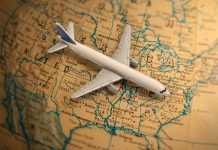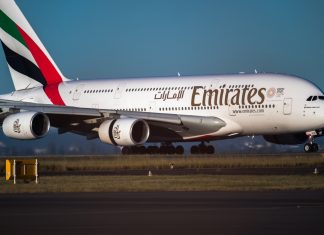Late last year, a survey taken by the Association of Flight Attendants-CWA (AFA-CWA) revealed some alarming findings: One out of five respondents in a survey of nearly 2,000 flight attendants said she or he had received a report of passenger-on-passenger sexual assault while working a flight.
Those who had experienced such incidents reported that law enforcement had been contacted or had met the plane less than half the time.
Of even greater concern, “the overwhelming majority of responders” reported having received no training from their airline employers relating specifically to sexual assault and said they had no knowledge of written guidelines related to handling sexual assaults.
As reports of sexual assault and harassment sweep through the U.S., taking down celebrities, news anchors and members of Congress, such incidents aboard jetliners are also coming into sharper focus. The allegation by Silicon Valley executive Randi Zuckerberg that she was sexually harassed on an Alaska Airlines flight last month received heavy media attention.
And the allegation made by a woman during the presidential campaign in fall 2016 that Donald Trump groped her aboard a flight in 1979 also led to media examinations of sexual harassment and sexual assault in the sky.
But advocates say they’re frustrated that regulators and airlines alike have not done more to determine the extent of the problem and develop ways to rein it in.
“I’ve spoken to so many people who have been assaulted on planes, and over and over again, the crew didn’t know what to do,” said Allison Dvaladze, who said she took up the fight against sexual assault and harassment in the sky after being groped three times in April 2016 on a Delta flight from Seattle to Amsterdam.
“I just feel like airlines need to come out in front of it instead of waiting for it to happen and doing nothing,” Dvaladze said.
After she was assaulted, she said, the Delta flight crew was earnest in attempting to help her.
“But they also weren’t sure what to do,” she said.
Eventually, flight attendants orchestrated a seat trade on the full flight so that Dvaladze could be separated from her attacker. Still, the man walked off the plane without the airline crew getting his name because he himself had switched from his original seat, meaning his identity couldn’t be determined on the passenger manifest.
Major U.S. carriers contacted for this report either avoided answering questions about whether they provide sexual harassment and assault training to flight crews or said that the training they do offer deals more generally with how to handle unruly passengers.
In one such carefully crafted statement, Southwest said, “Flight attendants are trained to take care of a wide range of sensitive customer issues. When aware of a potentially harmful situation — whether witnessed first-hand or reported by someone else — our flight attendants are trained to notify the pilots and request law enforcement, as appropriate.”
Delta spokesman Anthony Black said that while the nature of sexual assault or harassment is different than other types of unruly behavior, such as drunken belligerence or racism, the response tools flight attendants have are similar. Passengers can be separated and, if appropriate, law enforcement can be notified.
But AFA-CWA spokeswoman Taylor Garland said flight attendants need to be specifically trained for how to deal with victims of sexual assault and harassment in the sky.
“This isn’t someone who shoved you,” she said. “Some people who have experienced this don’t know how to express it. There can be shame associated with this type of an assault, so there needs to be a unique response when tackling or handling these types of situations on a plane.”
Advocates also say that airlines and federal agencies need better tracking of onboard incidents of sexual assault and harassment.
At present, neither the FAA nor the Department of Transportation (DOT) specifically tracks such incidents. Instead, such complaints are lumped in with reports of violent or unruly behavior on aircraft.
Similarly, major U.S. carriers contacted for this report either said that their records of passenger incidents are not categorized in a way that it is possible to cull out sexual misconduct. Others issued generic statements that avoided answering whether they undertake such cataloging.
Recording whether sexual assault or sexual harassment occurred in a specific incident is really a matter for the authorities, American spokesman Ross Feinstein said.
“It’s up to law enforcement to determine what transpired,” he said. “We might not know what the final disposition was.”
Paul Hudson, president of the consumer advocacy group Flyers Rights, said airlines might have other reasons for not being better at tracking reports of sexual assaults and harassment.
“For commercial reasons, they don’t want to know about it,” he said.
Hudson said the public would benefit from regulations requiring the federal government to collect such data from airlines. Making the data public, he said, would give the carriers added incentive to reduce sexual assaults and harassment on their flights.
Hudson is not alone in his concern. In July, senators Patty Murray (D-Wash.) and Bob Casey (D-Pa.) introduced a bill to address oversight of sexual misconduct in the sky.
Their bill, the Stopping Assault While Flying Enforcement Act, would direct the DOT to establish a program to collect data on sexual assaults and sexual harassment from airlines and to post that data on its website. The bill would also require airlines to train pilots and flight attendants on how to handle sexual misconduct and would set minimum standards for that training.


























